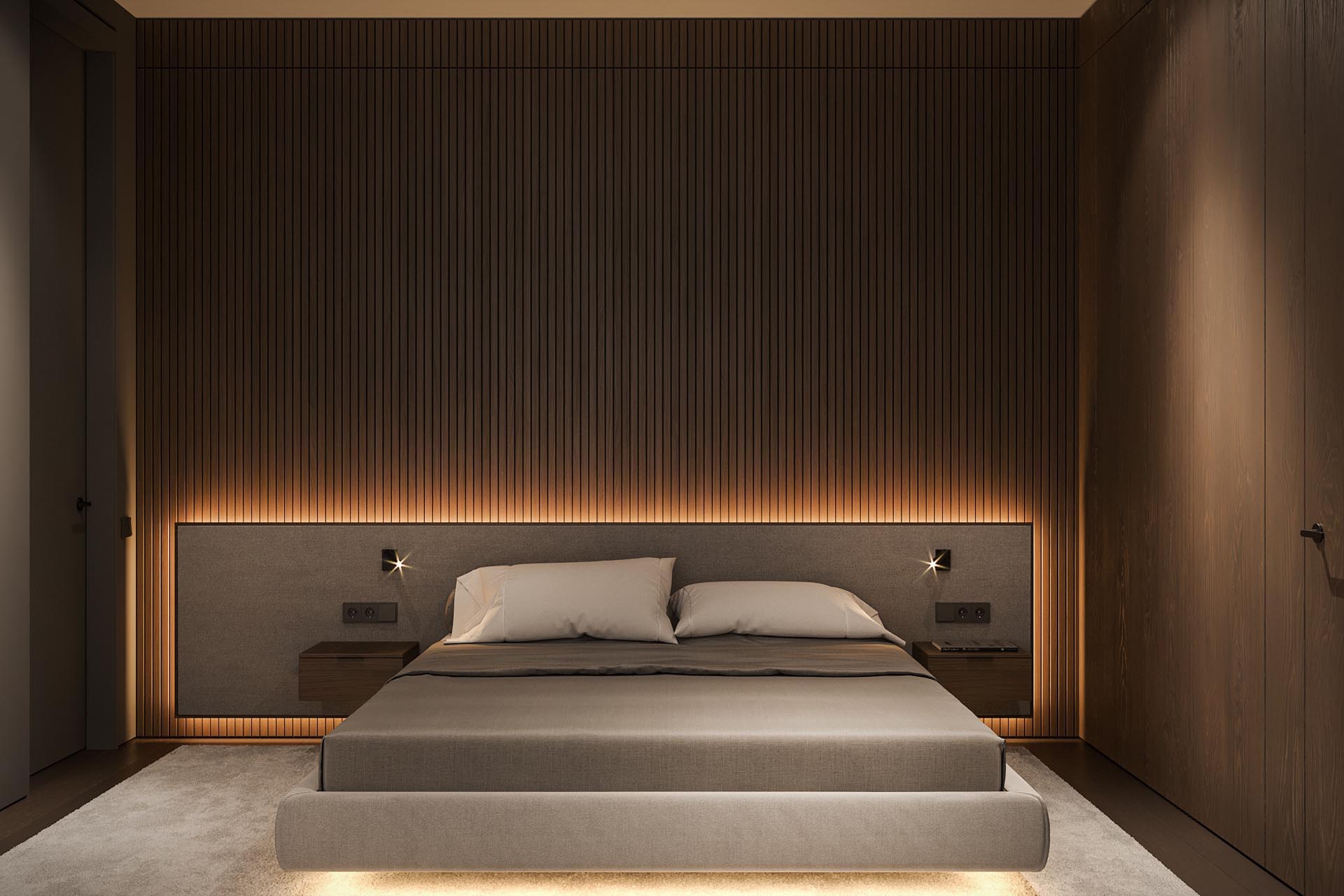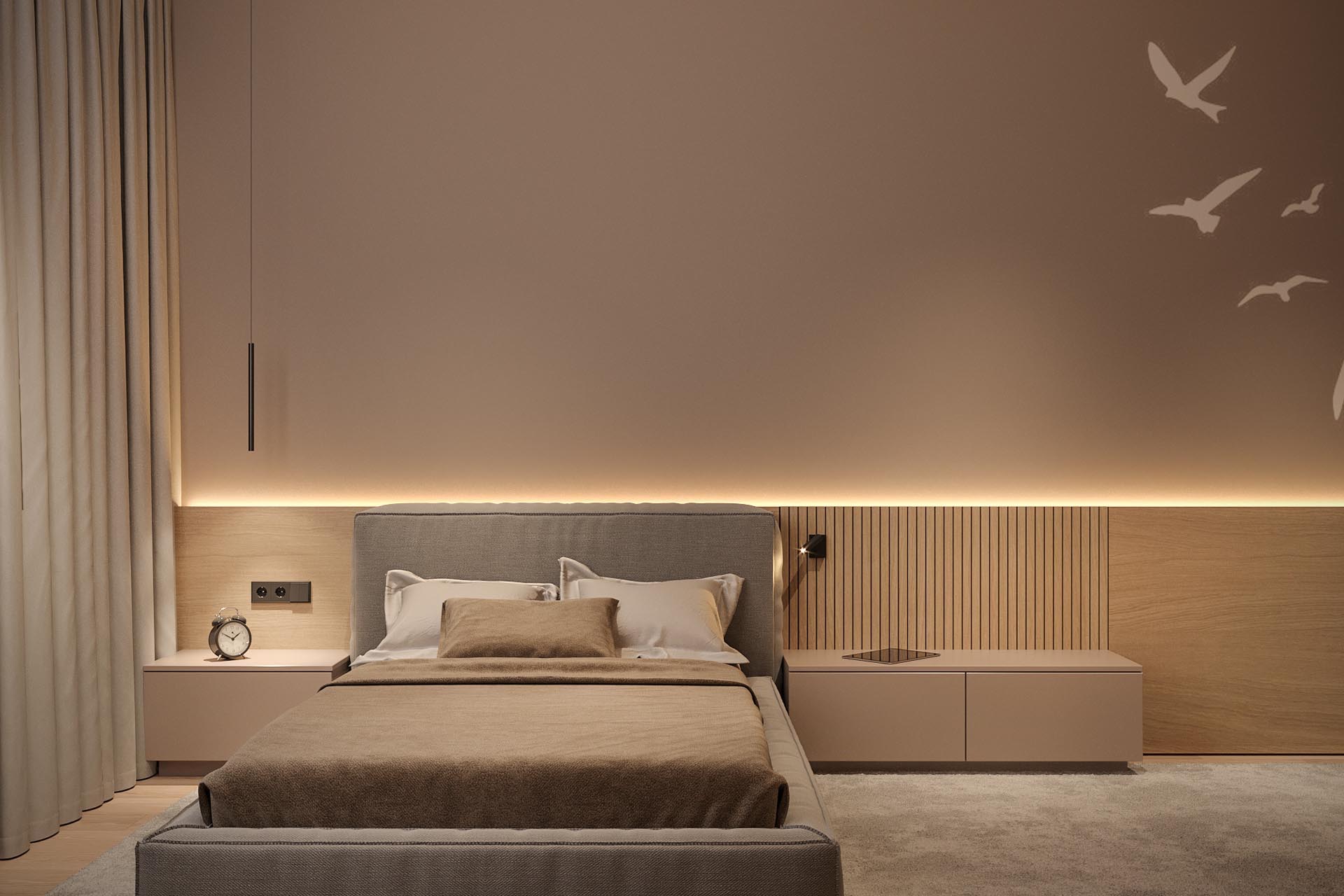The Power of LED Lighting in Bedroom Design: Led Light Bedroom Design

The bedroom, a sanctuary for rest and relaxation, deserves thoughtful illumination. LED lighting, with its numerous advantages, has become a popular choice for creating the perfect ambiance in this intimate space. Its versatility and energy efficiency make it an ideal solution for enhancing both functionality and aesthetics.
Energy Efficiency and Lifespan
LED lighting is renowned for its energy efficiency. Compared to traditional incandescent bulbs, LEDs consume significantly less power while providing the same level of brightness. This translates to lower energy bills and a smaller carbon footprint. Furthermore, LEDs have an exceptionally long lifespan, lasting for thousands of hours, which reduces the frequency of bulb replacements.
Color Temperature Options
LED lights offer a wide range of color temperatures, measured in Kelvin (K). This allows for precise control over the ambiance created. Warm white (2700-3000K) provides a cozy and inviting atmosphere, ideal for relaxation and sleep. Cool white (4000-4500K) offers a more stimulating and energizing environment, suitable for tasks that require focus. Daylight (5000-6500K) mimics natural sunlight, providing a bright and clear illumination.
Creating Different Moods and Ambiances
LED lighting can be strategically used to create a variety of moods and ambiances in a bedroom. For instance, a dimmer switch can be used to adjust the brightness of LED lights, creating a calming and relaxing atmosphere for bedtime. Color-changing LEDs can add a touch of whimsy and personalization, allowing users to cycle through different colors or set specific hues to match their mood.
Highlighting Architectural Features
LED lights can be used to accentuate architectural features in a bedroom, adding depth and dimension to the space. Recessed lighting can highlight the ceiling, while under-cabinet lighting can illuminate countertops and storage areas. LED strip lights can be used to create dramatic effects along walls, behind furniture, or under beds.
Creating Visual Interest, Led light bedroom design
LED lights can also be used to create visual interest in a bedroom. A string of LED fairy lights draped across a headboard or draped around a mirror can add a touch of romance and charm. LED light strips can be used to create patterns or geometric shapes on walls, adding a modern and dynamic element to the space.
Types of LED Lights for Bedroom Design

The selection of LED lights for your bedroom goes beyond just choosing a bulb. Different types of LED lights offer distinct advantages and disadvantages, influencing the ambiance, functionality, and overall aesthetic of your space. Understanding these variations empowers you to make informed decisions that align with your design goals.
Recessed Lights
Recessed lights, also known as downlights, are a popular choice for bedrooms due to their sleek and minimalist appearance. These lights are installed flush with the ceiling, creating a clean and unobtrusive look.
Advantages of Recessed Lights:
- Subtle and Minimalist: Recessed lights blend seamlessly with the ceiling, minimizing visual clutter and maximizing the feeling of spaciousness.
- Versatile Illumination: They provide general ambient lighting, making them suitable for various bedroom activities, from reading to relaxing.
- Energy Efficiency: LED recessed lights are known for their energy-saving properties, contributing to lower energy bills and a reduced environmental footprint.
Disadvantages of Recessed Lights:
- Installation Complexity: Installing recessed lights requires cutting into the ceiling, which can be a more involved process than other lighting options.
- Limited Directionality: Recessed lights typically emit light downwards, making it challenging to direct the light for specific tasks or areas.
- Potential for Glare: Improper placement or insufficient shielding can lead to glare, causing discomfort and eye strain.
Track Lights
Track lights offer flexibility and adaptability, allowing you to customize the direction and focus of light within your bedroom. These lights are mounted on a track system, which can be positioned along walls or ceilings, providing adjustable illumination.
Advantages of Track Lights:
- Directional Control: The ability to adjust the direction of the lights allows you to highlight specific features, such as artwork or architectural details.
- Customizable Layouts: Track lights can be easily rearranged to create different lighting schemes and accommodate changing needs.
- Multiple Light Sources: Track systems can accommodate multiple light fixtures, providing ample illumination for various tasks and activities.
Disadvantages of Track Lights:
- Potential for Clutter: Track systems can be visually prominent, potentially adding clutter to the space, especially if not carefully integrated into the design.
- Limited Aesthetics: Track lights often have a more industrial aesthetic, which may not be suitable for all bedroom styles.
- Installation Complexity: Installing track lights requires careful planning and consideration of electrical wiring.
Pendant Lights
Pendant lights are suspended from the ceiling, adding a touch of elegance and sophistication to bedroom designs. These lights come in various shapes, sizes, and styles, allowing you to choose options that complement your existing decor.
Advantages of Pendant Lights:
- Stylish and Decorative: Pendant lights serve as decorative elements, enhancing the visual appeal of your bedroom.
- Focal Point Creation: They can be used to create a focal point in the room, such as over a bedside table or dressing area.
- Adjustable Height: Many pendant lights offer adjustable height options, allowing you to customize the light placement and create the desired ambiance.
Disadvantages of Pendant Lights:
- Limited Versatility: Pendant lights may not be suitable for all bedroom layouts, especially those with low ceilings or limited space.
- Potential for Obstruction: The hanging nature of pendant lights can pose an obstruction risk, especially in rooms with limited headroom.
- Installation Complexity: Installing pendant lights requires electrical wiring and careful consideration of ceiling height and fixture weight.
Strip Lights
Strip lights, also known as LED tape lights, offer a versatile and flexible lighting solution for bedrooms. These lights are thin, flexible strips that can be easily adhered to surfaces, allowing you to create ambient lighting, accentuate features, or add a touch of color.
Advantages of Strip Lights:
- Flexible and Customizable: Strip lights can be easily shaped and bent to fit any surface, creating unique and dynamic lighting effects.
- Ambient and Accent Lighting: They can be used to create ambient lighting for a relaxing atmosphere or accentuate architectural details or furniture.
- Color-Changing Options: Many strip lights offer color-changing capabilities, allowing you to adjust the mood and ambiance of your bedroom.
Disadvantages of Strip Lights:
- Limited Brightness: Strip lights typically provide less brightness than other types of LED lights, making them less suitable for general illumination.
- Durability Concerns: The thin and flexible nature of strip lights can make them susceptible to damage, especially in areas with high traffic or moisture.
- Potential for Overheating: Strip lights can generate heat, especially when used for extended periods, which could be a concern in enclosed spaces.
Creating a Dreamy Bedroom with LED Lighting
Imagine a bedroom where the lighting gently guides you to relaxation, where every corner whispers of tranquility, and where the ambiance reflects your unique style. LED lights, with their versatility and energy efficiency, are the perfect tools to transform this vision into reality.
Creating a Relaxing and Intimate Ambiance
A well-designed lighting plan using LED lights can create a sense of relaxation, intimacy, and visual appeal in a bedroom. By incorporating a combination of ambient, task, and accent lighting, you can create a versatile space that adapts to your mood and needs.
- Ambient Lighting: This is the foundation of your bedroom lighting. Think of it as the overall illumination that sets the mood. Warm white LEDs (2700-3000K) are ideal for creating a cozy and inviting atmosphere. Consider installing LED strip lights behind the headboard or under the bed frame for a soft, diffused glow. You can also use LED ceiling lights with adjustable color temperatures to create a warm and inviting ambiance.
- Task Lighting: This type of lighting is designed for specific activities, such as reading, getting ready in the morning, or working from home. LED desk lamps with adjustable brightness and color temperatures are excellent for reading. For makeup application, consider LED vanity lights that provide bright and even illumination. Ensure the task lighting is placed strategically to avoid glare and shadows.
- Accent Lighting: Accent lighting is used to highlight specific features in the room, such as artwork, plants, or architectural details. LED spotlights are great for illuminating paintings or sculptures. LED strip lights can be used to highlight the edges of furniture or create a dramatic effect behind curtains. The key is to use accent lighting to add depth and interest to your bedroom design.
